If you’re like me, winter gardening can be challenging. If you live in a frigid climate, the snow and wind will kill your crops. Even in warmer climates, like California and Florida, winters can turn a healthy garden into a pile of dead plants.
As daunting as the season can be, you can preserve your crops with frost protectors. From DIY cold frames to simple hoop houses, these plant protectors will keep your garden safe during the winter.
Critter Cover Frost Blanket (10 pack)
Each blanket provides up to 10 degrees of frost protection, giving young and sensitive plants extra insulation. The woven material is also perfect for preventing plants from insect pests and hungry mammals.
Cloches
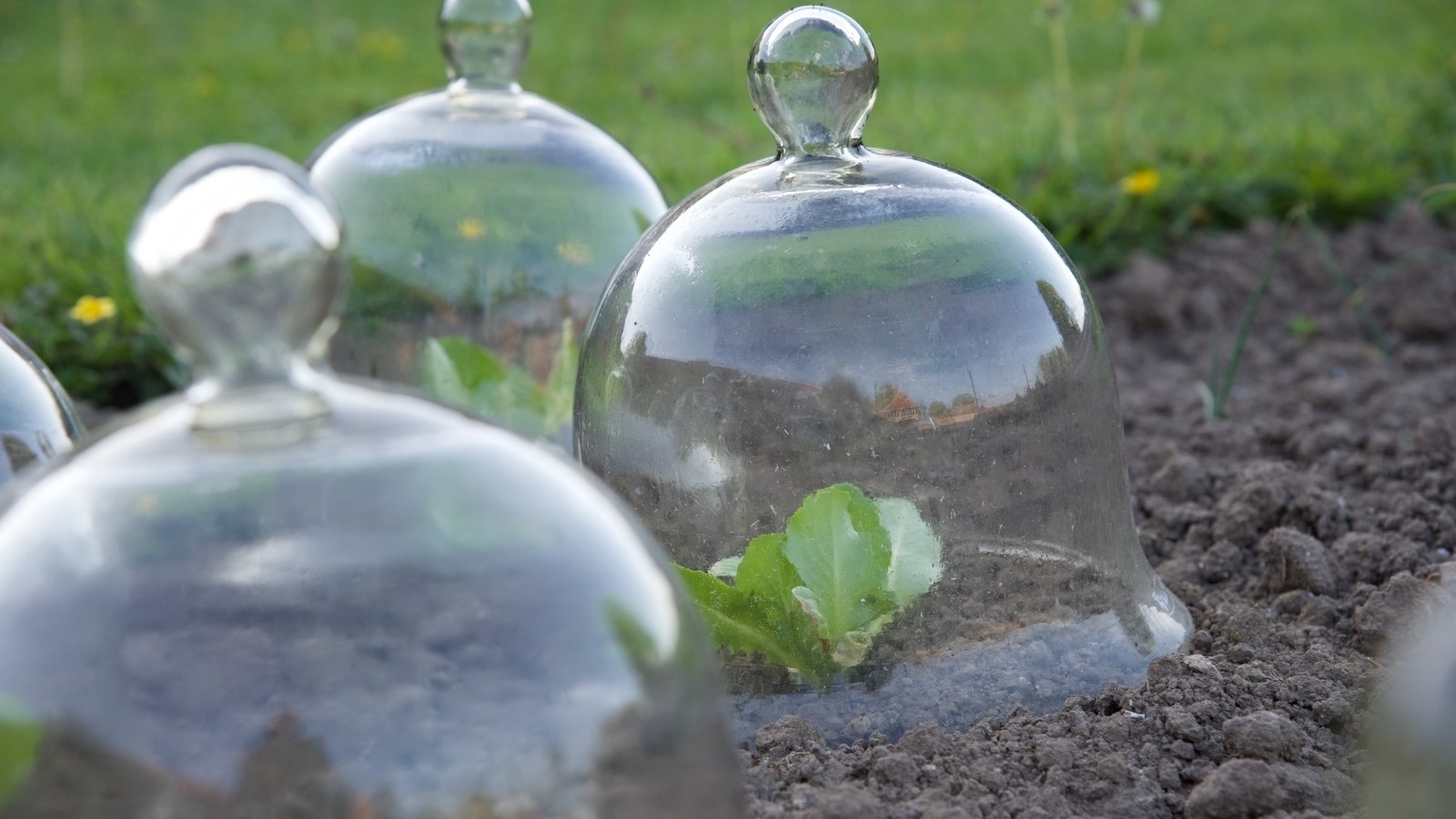
Cloches are the easiest protectors against cold weather you could buy. The French popularized them in the 17th and 18th centuries, but an Italian glassmaker first invented them in 1623. Their simple glass bell designs help plants survive frost by focusing sunlight toward the leaves. Even during the gray skies of winter, enough heat gets trapped inside the glass to keep the soil and your plant warm.
Cloches are great for small gardens with crops spaced far apart. They look elegant yet need to be anchored in place to stay put in high winds. If you can’t find cloches online or at your local garden supply store, try making your own with used plastic bottles, empty water jugs, or large glass jars.
Great for:
- Broccoli
- Carrots
- Chicory
- Tomatoes
- Chilis
- Endives
- Onions
Frost Blankets
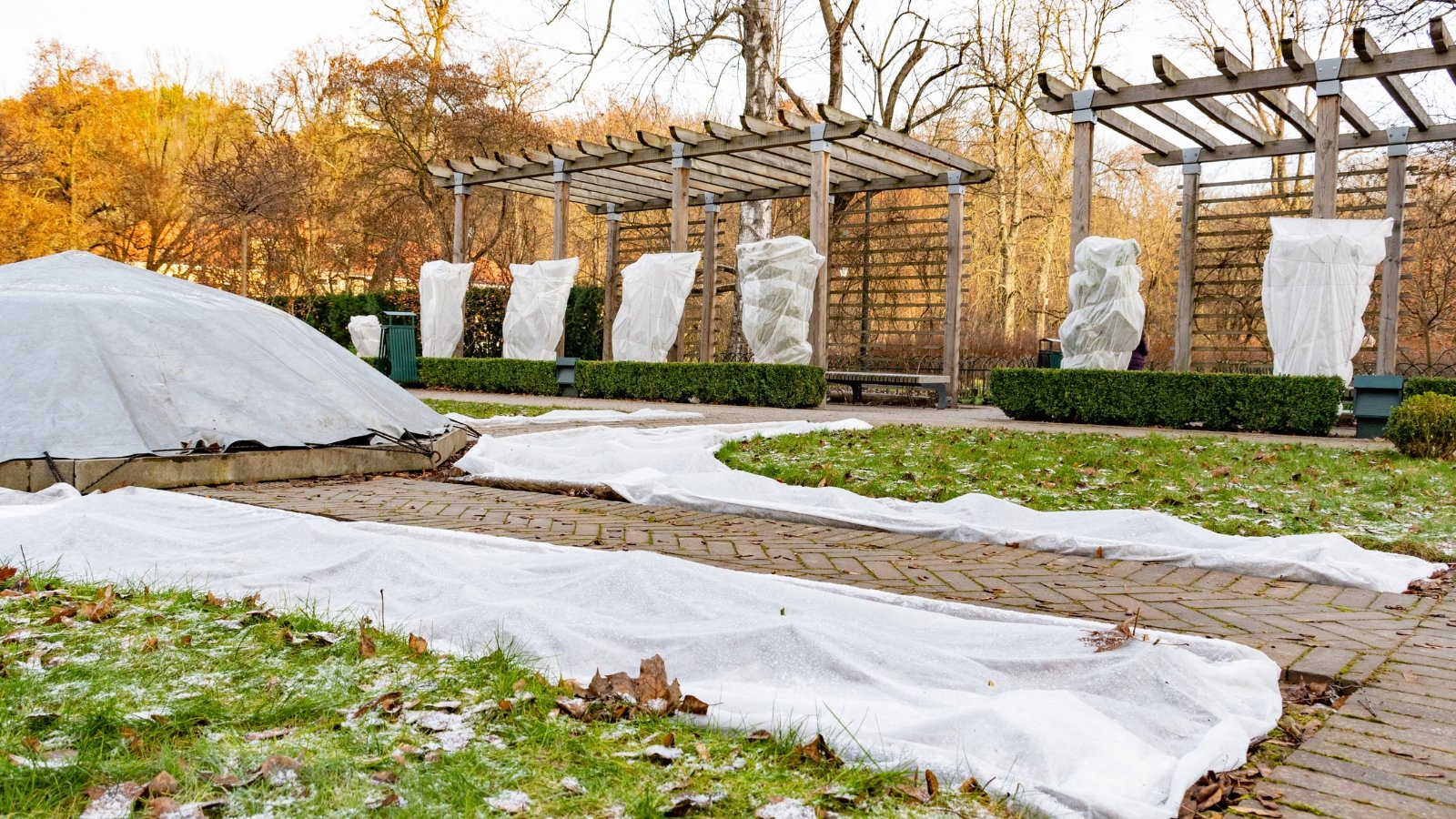
Frost blankets are great to have if you live in places that experience severe cold snaps, such as Texas and the Carolinas. If the temperature is predicted to fall sharply overnight, you can hurriedly throw one of these covers over your garden to protect it from frigid nights. Most frost blankets are simple sheets of plastic, commercial fabric, or even used bed sheets that you can extend over your garden.
Some frost blankets cover individual plants, like the Critter cover Frost Blanket. You can place these easy-to-use covers on your more sensitive crops to protect them from temperatures up to 22°F (-5°C). They are also handy in the spring to help seedlings germinate even when frost is still a threat.
Great for:
- Seedlings and pest-prone plants in early spring
- Herbs
- Low-lying vegetables
- Berry plants
Floating Row Covers
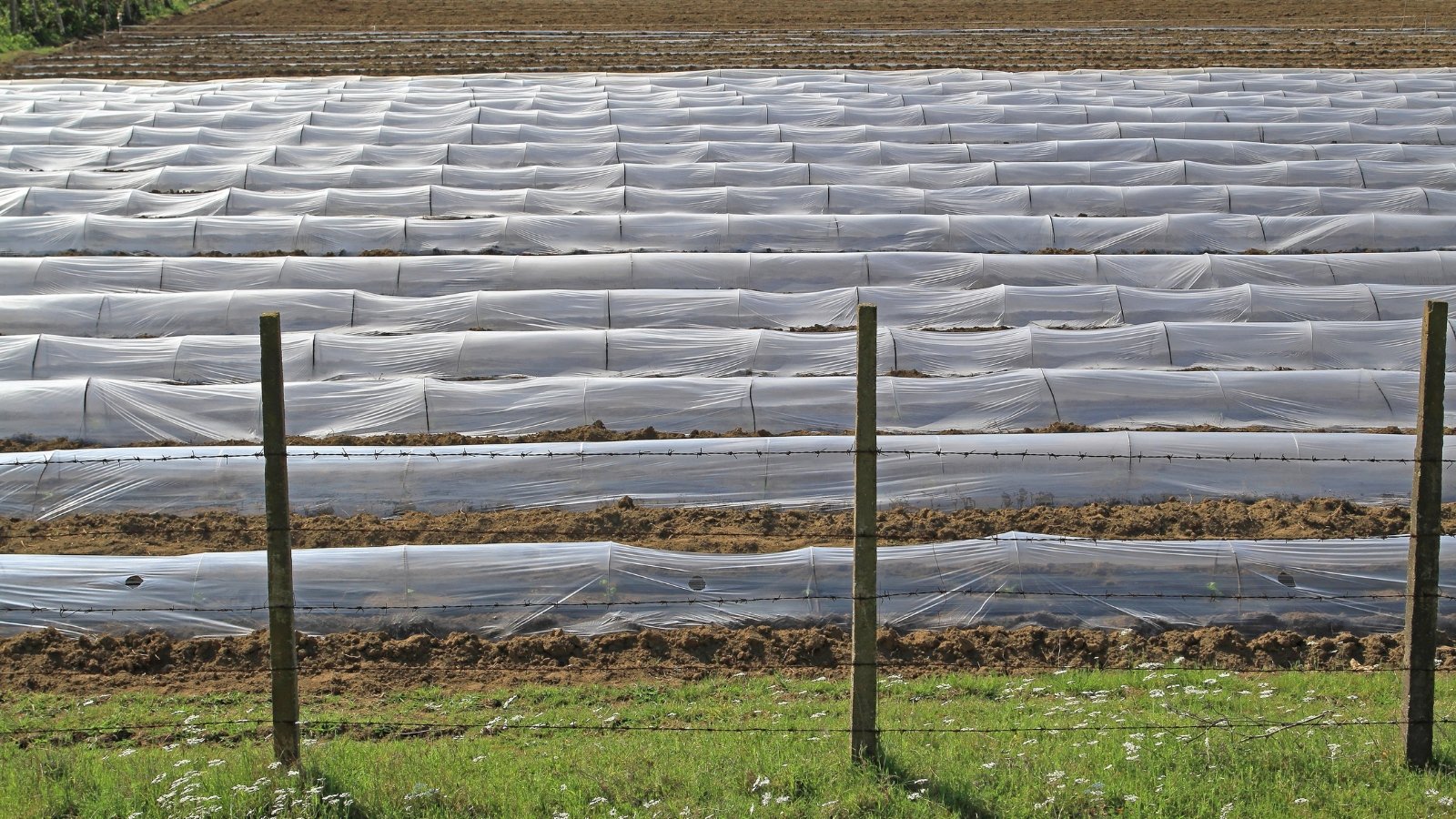
Floating row covers may be a good winter plant protector choice if you live in USDA hardiness zones 6 to 9 and receive little annual snow. These simple protectors are similar to frost blankets and are usually made from clear plastic or woven textiles draped over a loop or raised structure. They protect your plants from animals and frost and can keep a winter garden looking healthy throughout the season.
Row covers turn your winter garden into a humid biome, trapping heat in the soil around your beds. If you attach them correctly, row covers can be sturdy even in high winds. They also allow rainwater to enter the soil around your plants, giving them easy access to water.
You can build a frame underneath your floating row covers to give your crops extra room to grow during the chilly season. Many gardeners prefer PVC loops, which are easy to remove and last a long time. You can also use bendable wooden branches for a more environmentally friendly solution. Drape your row covers over the loops above your garden rows and secure them tightly.
Great For:
- Arugula
- Kale
- Broccoli
- Mustard greens
- Spinach
- Radishes
- Strawberries
Cold Frame Tents
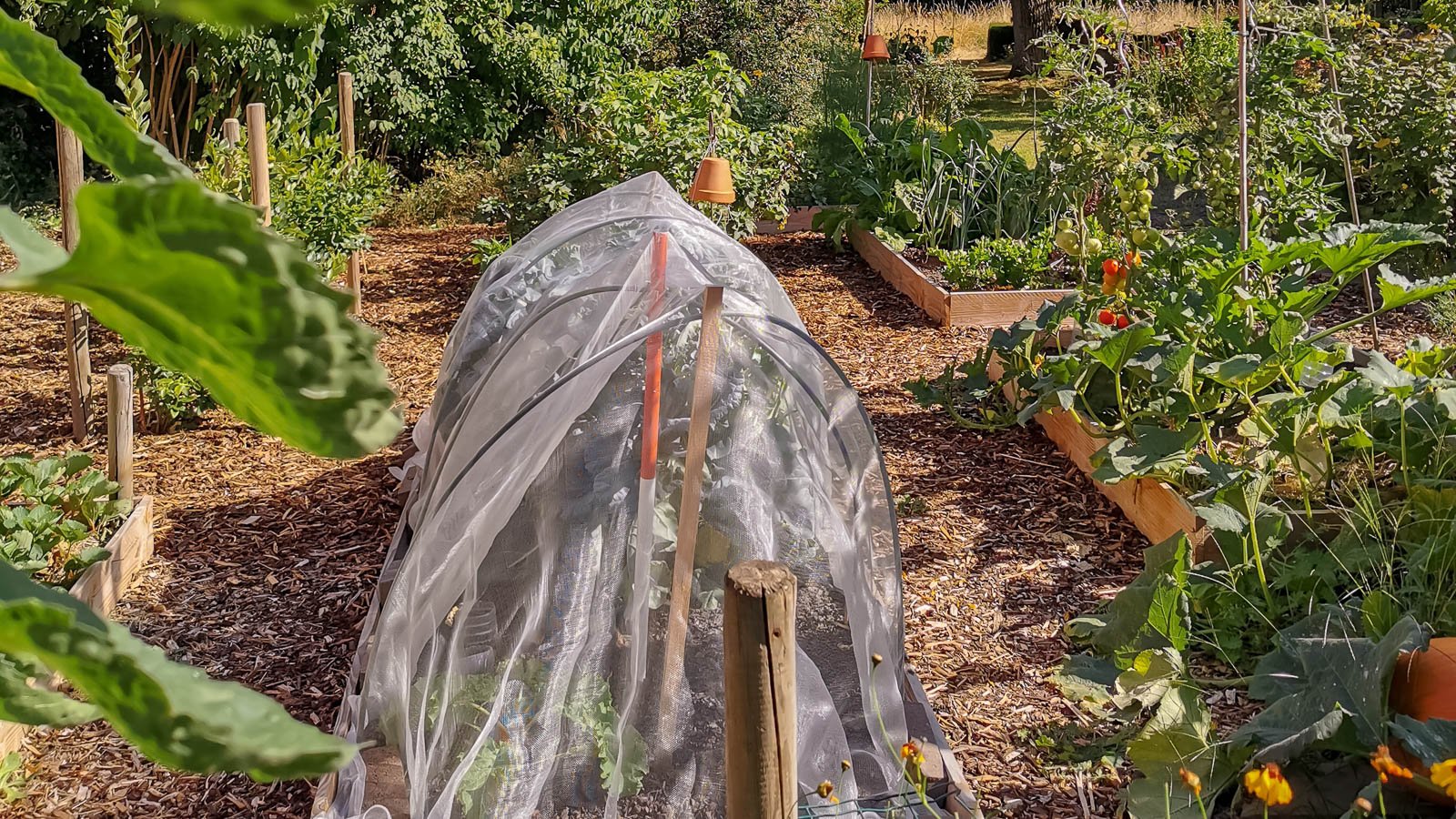
Cold frame tents are simple designs that fit over your raised beds. All you’ll need is lumber, screws, a long hardwood dowel for center support, and some heavy clear plastic sheeting. Simply build a pyramid frame and cover it with a plastic sheet.
These cold frames stand over your garden and protect taller plants from the cold. You can place them over your raised garden beds or build a frame to support the structure over your beds. The clear plastic sheeting will let enough sunlight in to ensure growth while still protecting your garden from the cold.
Great For:
- Small citrus trees
- Tomatoes
- Chili peppers
- Collard greens
DIY Raised Bed Cold Frames
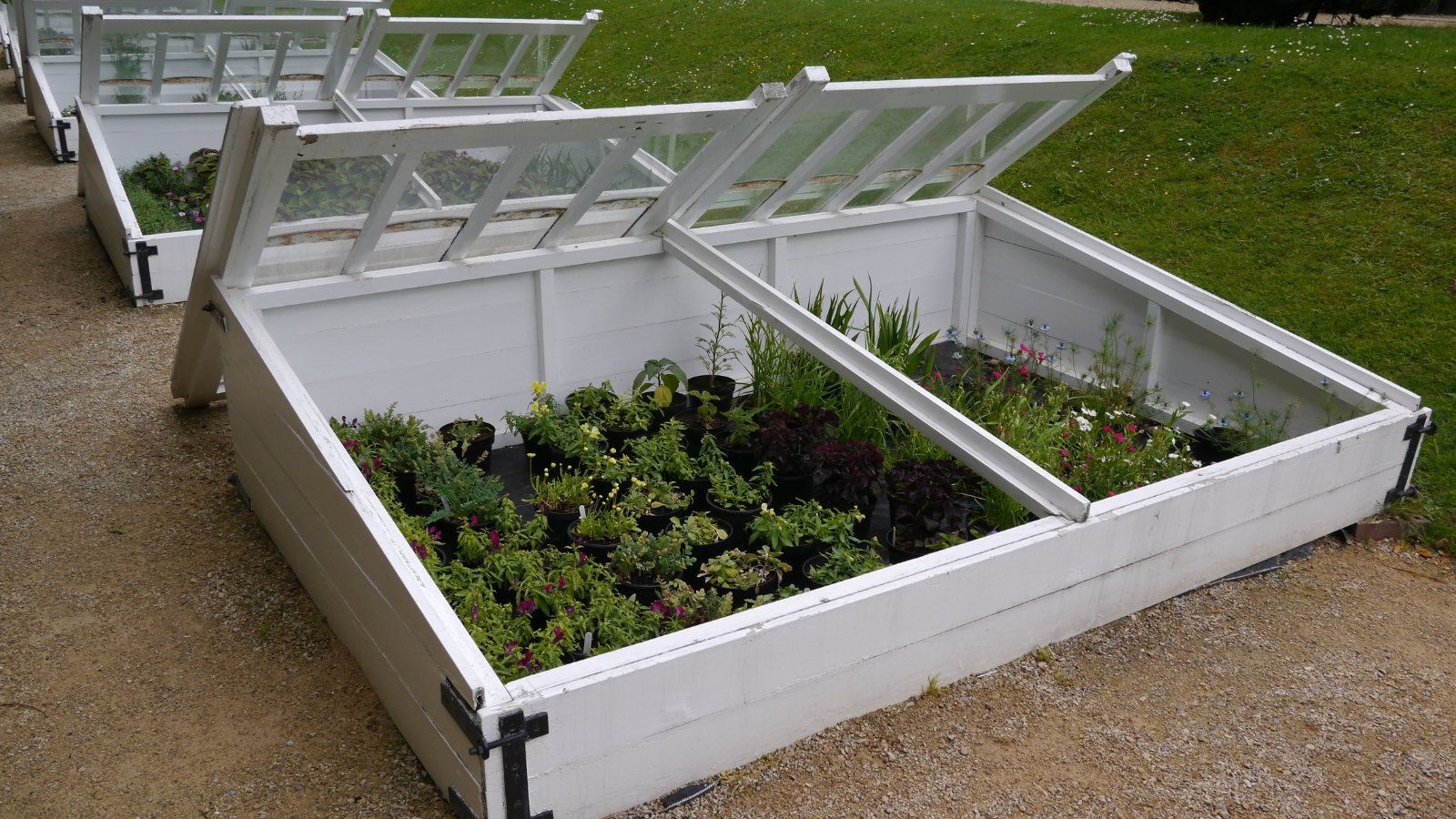
If you have a simple raised bed, consider building a 4 ‘ by 4’ raised bed cold frame. These designs are perfectly suited for cold-weather gardening. You won’t need many materials and you’ll be able to change the designs based on your needs.
If you live in areas prone to snow or heavy rain, you can build your cold frame with a sloped lid. This lets the rain run off easily and makes snow removal a breeze. It also lets you angle the frame to let in more direct sunlight. When the weather warms up, you can remove the frame and store it away for the next winter season.
Great for:
- Tatsoi
- Miner’s lettuce
- Kale
- Carrots
- Parsnips
- Cabbage
DIY Hoop Houses
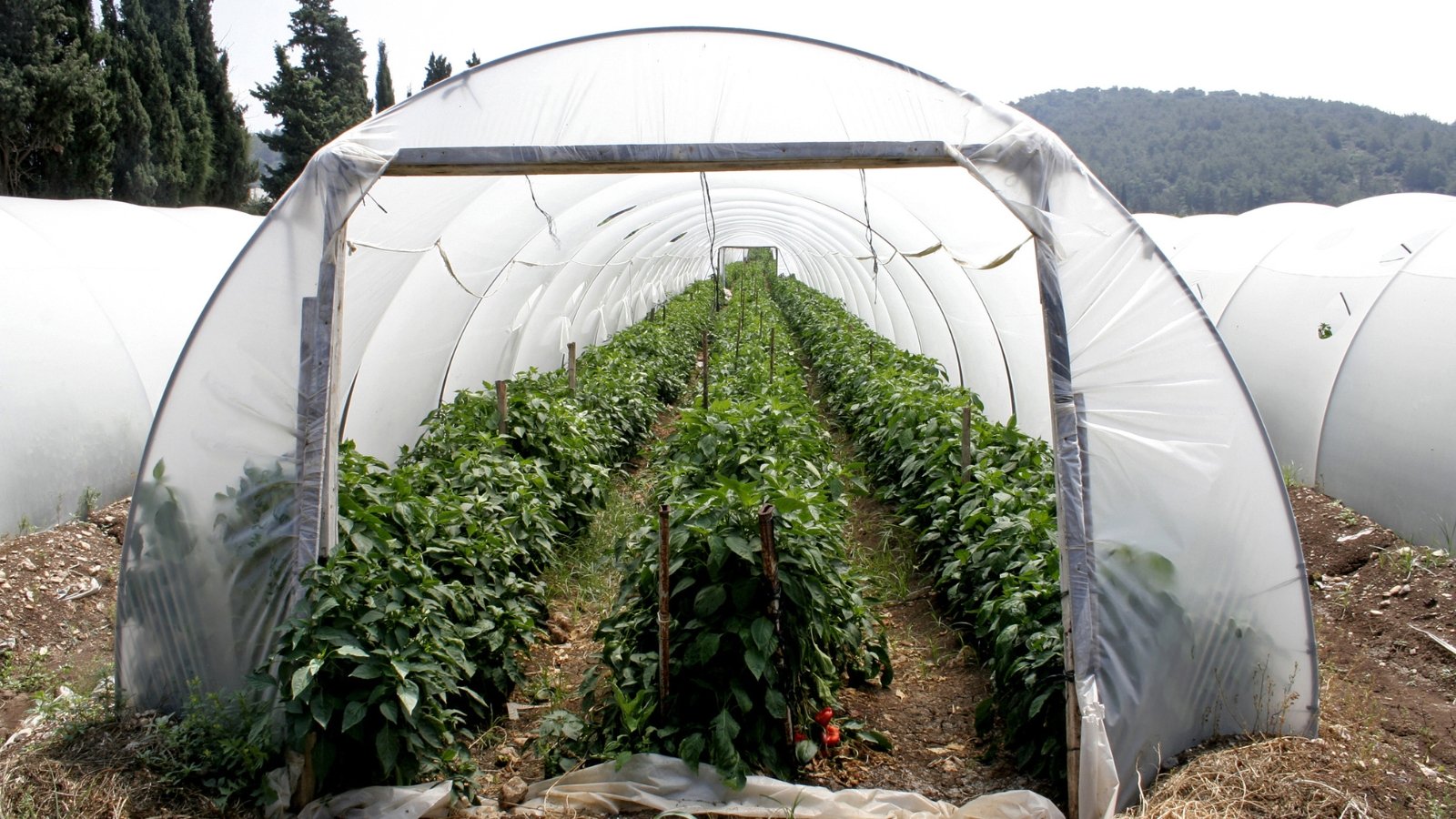
Hoop houses are great for pushing the growing season deep into winter. These miniature greenhouses are easy to build and can save your crops from frost, snow, and even hungry animals. With solid plastic polyethylene covers, these protectors let in enough sunlight for winter crops to grow, even during heavy snow or frost.
Raised bed hoop houses are simple to build and reusable. You can build these hoop houses easily by connecting PVC pipes to the sides of your raised bed. Then, attach a plastic cover material using duct tape and clamps.
The most important thing to consider is the measurement of your raised bed. Once you know your measurements and have your materials, you’re good to go. Raised bed hoop houses are versatile and you can change the design based on your garden’s needs.
Great for:
- Large garden shrubs
- Tomatoes
- Chili peppers
- Small citrus trees
- Collard greens
Window and Door Cold Frames
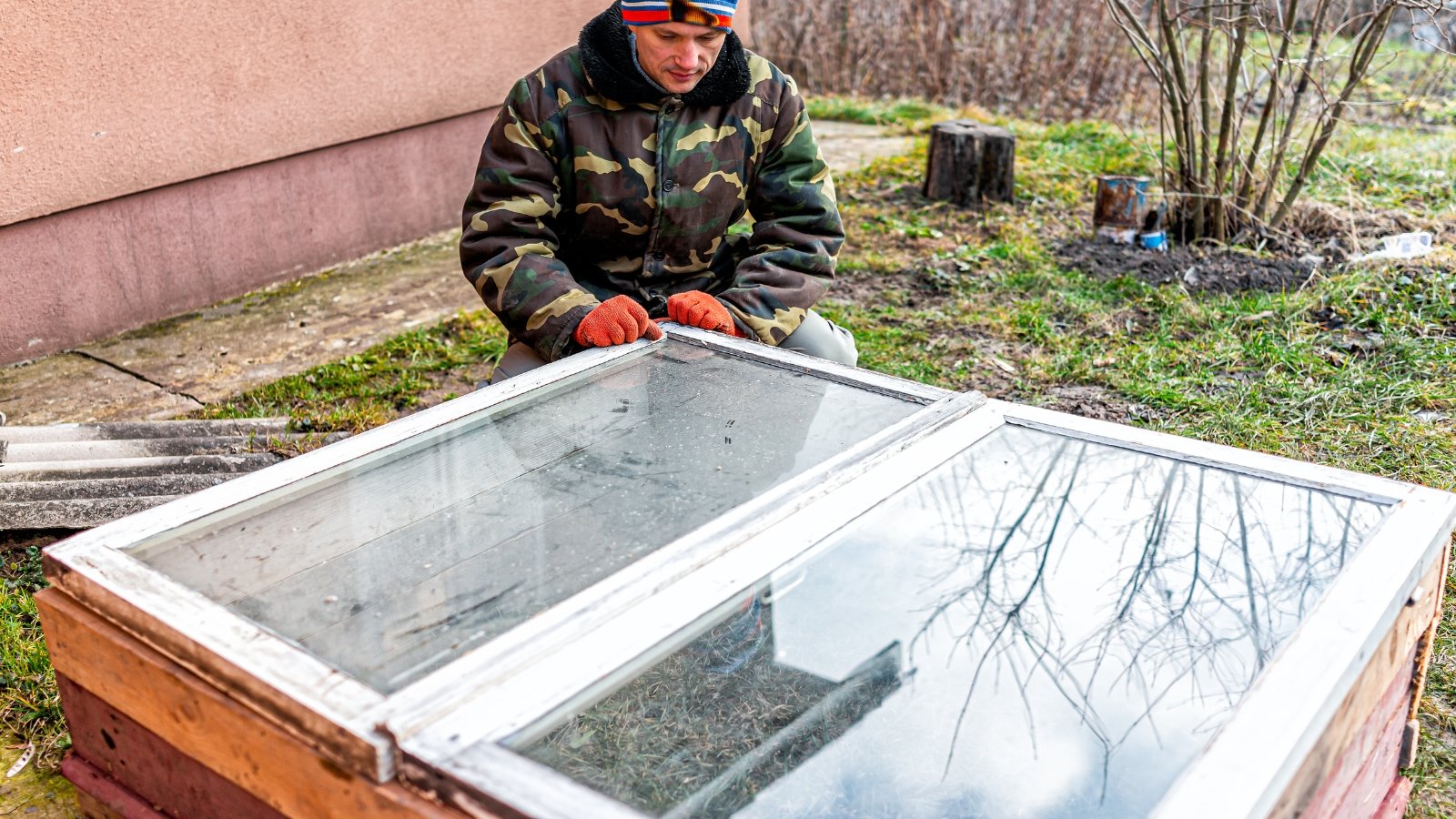
If you’ve done a major renovation project in your home or tore down an old building, you might have windows or glass doors at your disposal. Why not use them to build a cold frame? Just like plastic sheeting, glass can be an excellent barrier to frost and cold wind in your garden. It also looks cool.
These cold frames work the same way as their clear plastic counterparts, but with glass windows or doors. Simply attach your windows or doors to your slanted frame. Get creative and attach them on hinges so they can open up when you want to inspect your plants.
You can use a variety of other materials to create designs that are both creative and effective. Instead of lumber, try building your cold frame with bricks. It may be permanent, but it will look amazing. This design is perfect in regions with cold winters and short growing seasons like Minnesota or even Alaska.
Great for:
- Carrots
- Kale
- Cabbage
- Lettuce
- Turnips
- Winter gardens in cold regions
Other Ways to Protect Your Plants in Winter
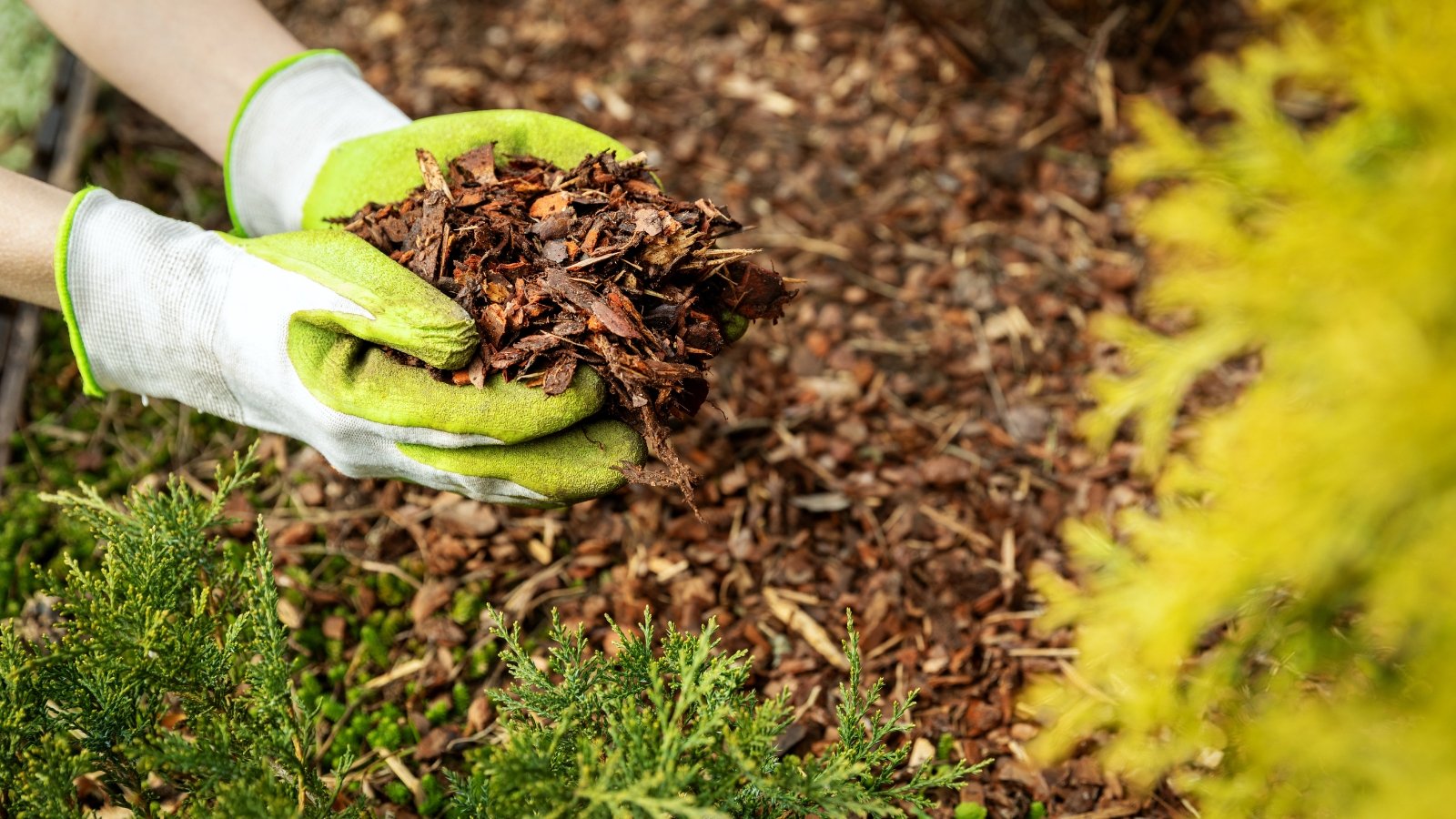
Besides plant protectors, you have a variety of tools to protect your plants during the winter. From cold-hearty vegetables to delicate flowers, there’s no reason you can’t garden in the winter or at least late into the season. Below are a few more ideas for winterizing your garden in addition to using plant protectors.
Choose Cold-Hardy Crops
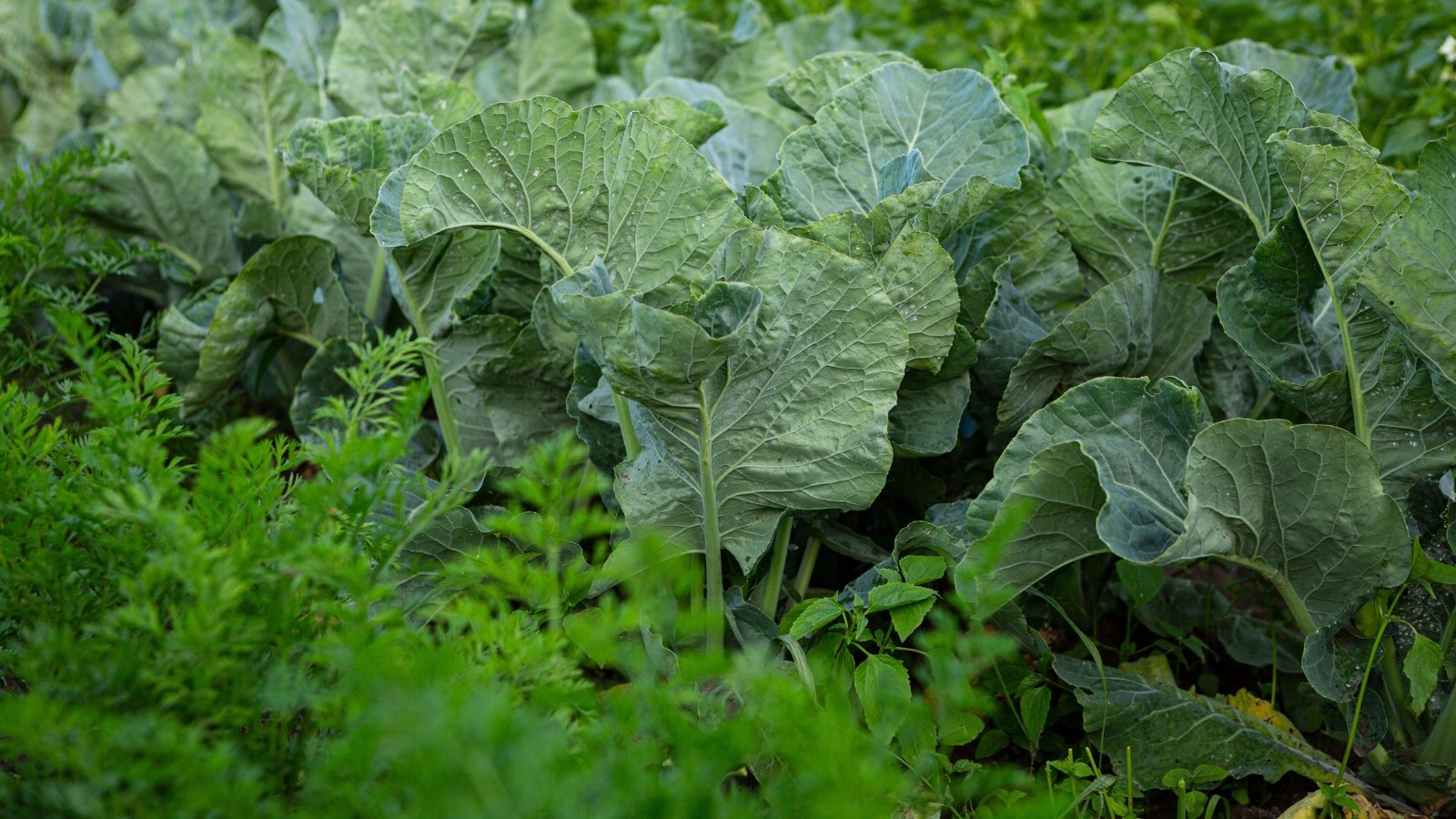
If you live in an area that gets winter weather, why not dedicate a section of your garden to growing winter crops? Vegetables such as broccoli, carrots, turnips, and cabbage can survive cold temperatures, especially when planted early in the season. With the added protection of a plant protector, you’ll have a bountiful harvest throughout the cold season.
Mulch Everywhere!
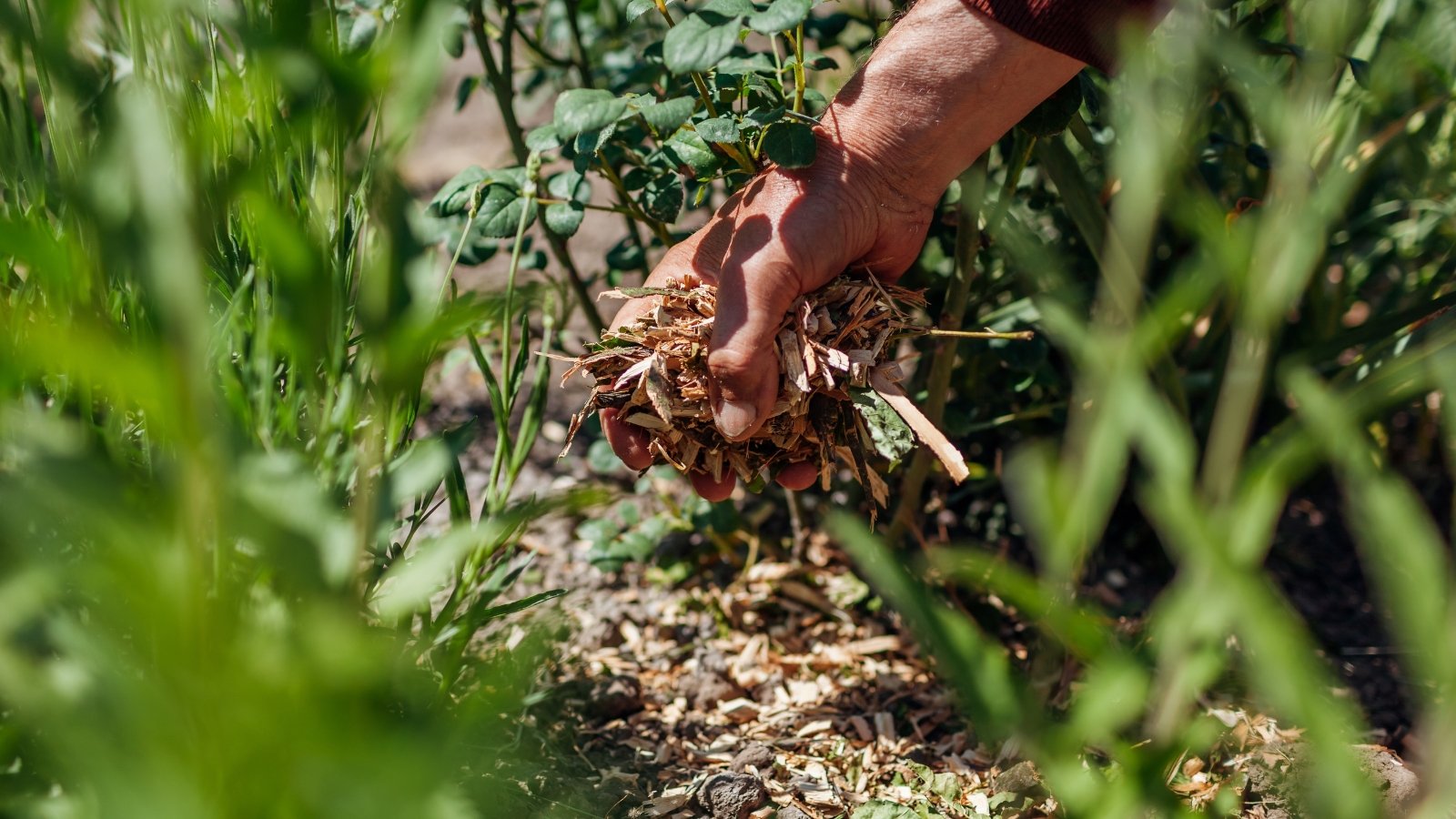
Mulch is the best tool for winterizing your garden. It works by insulating the soil around your plants. If there’s frost, it will protect the roots and even keep pesky weeds from growing around your crops. In rainy regions like coastal Washington, separate your mulch from the base of your plants to prevent slugs and fungal diseases from wreaking havoc.
Give Perennials a Pruning
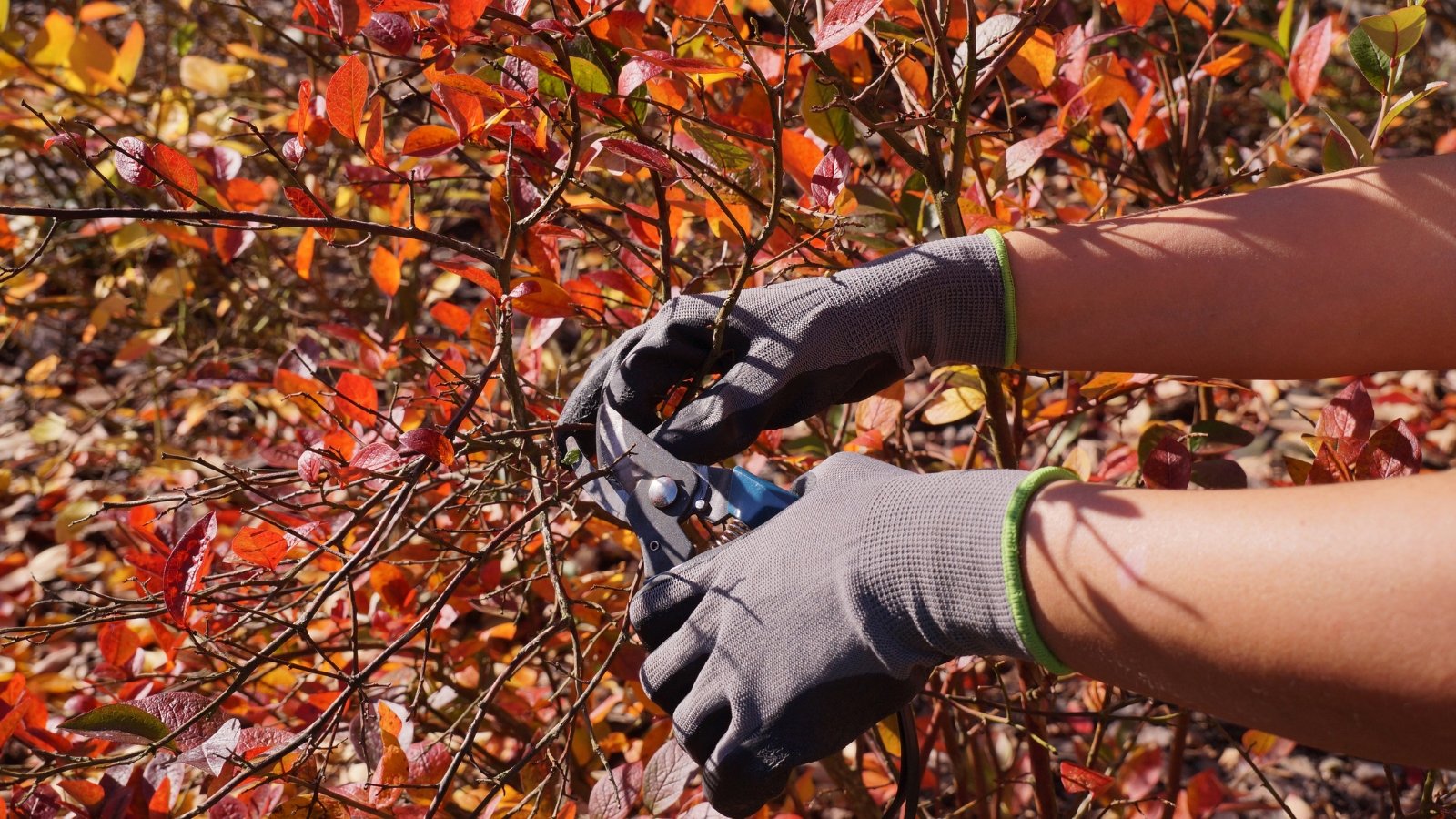
Pruning is a great way to protect your perennials from winter damage. By cutting away excess growth, your plants will transport nutrients toward their roots, giving them more energy to last through the winter. Plants such as grapevines, blueberries, and lavender love a good pruning in the winter. Come spring, they will return healthier than ever.
However, beware that some plants should never be pruned in fall.
Daytime Watering
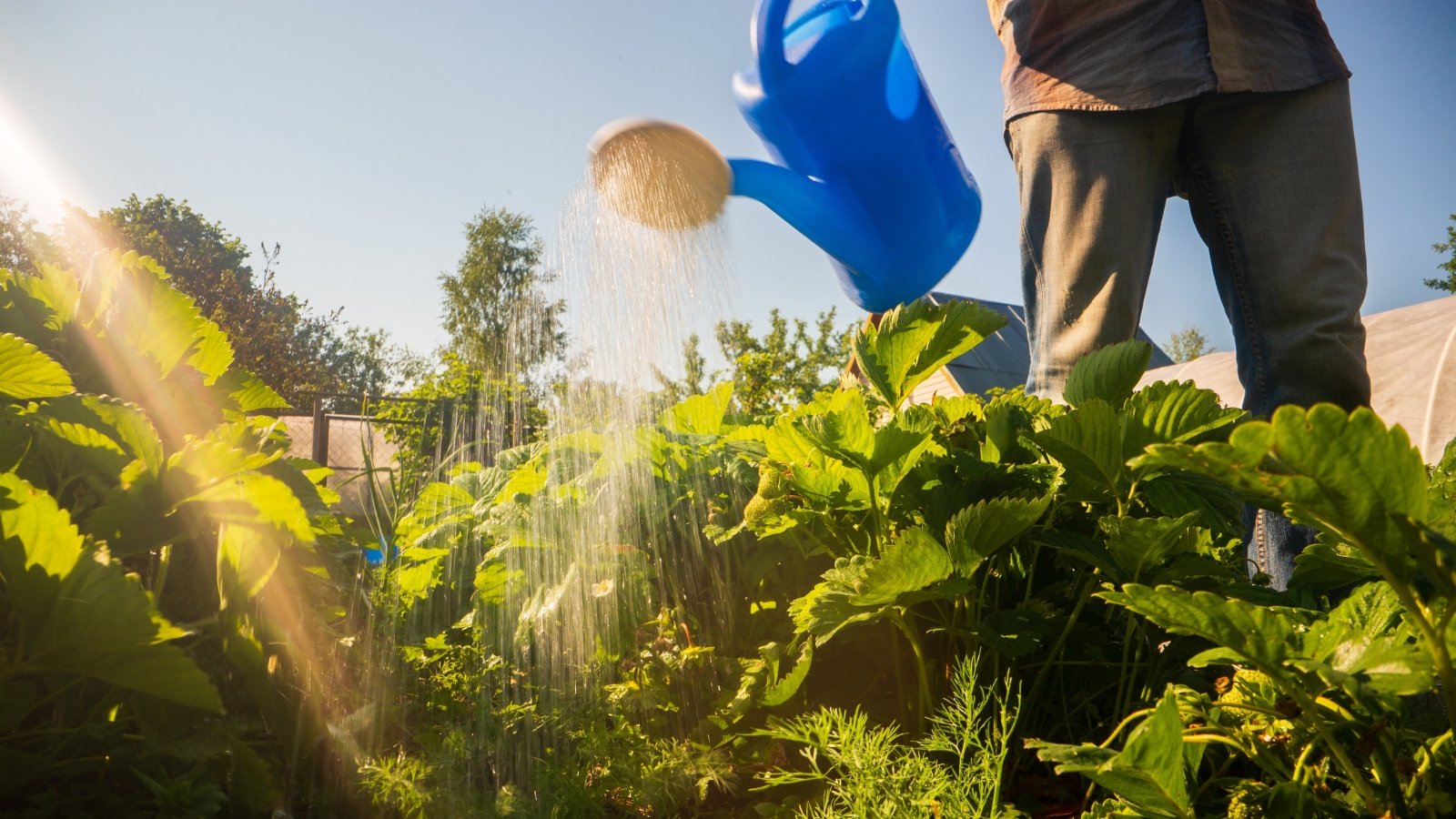
Soak your plants and soil during the day. Water absorbs heat and damp soil acts as a heat conductor for your plants. Gardens in areas with extreme day and night temperature swings, like California and Nevada, benefit from daytime watering.
Use Containers
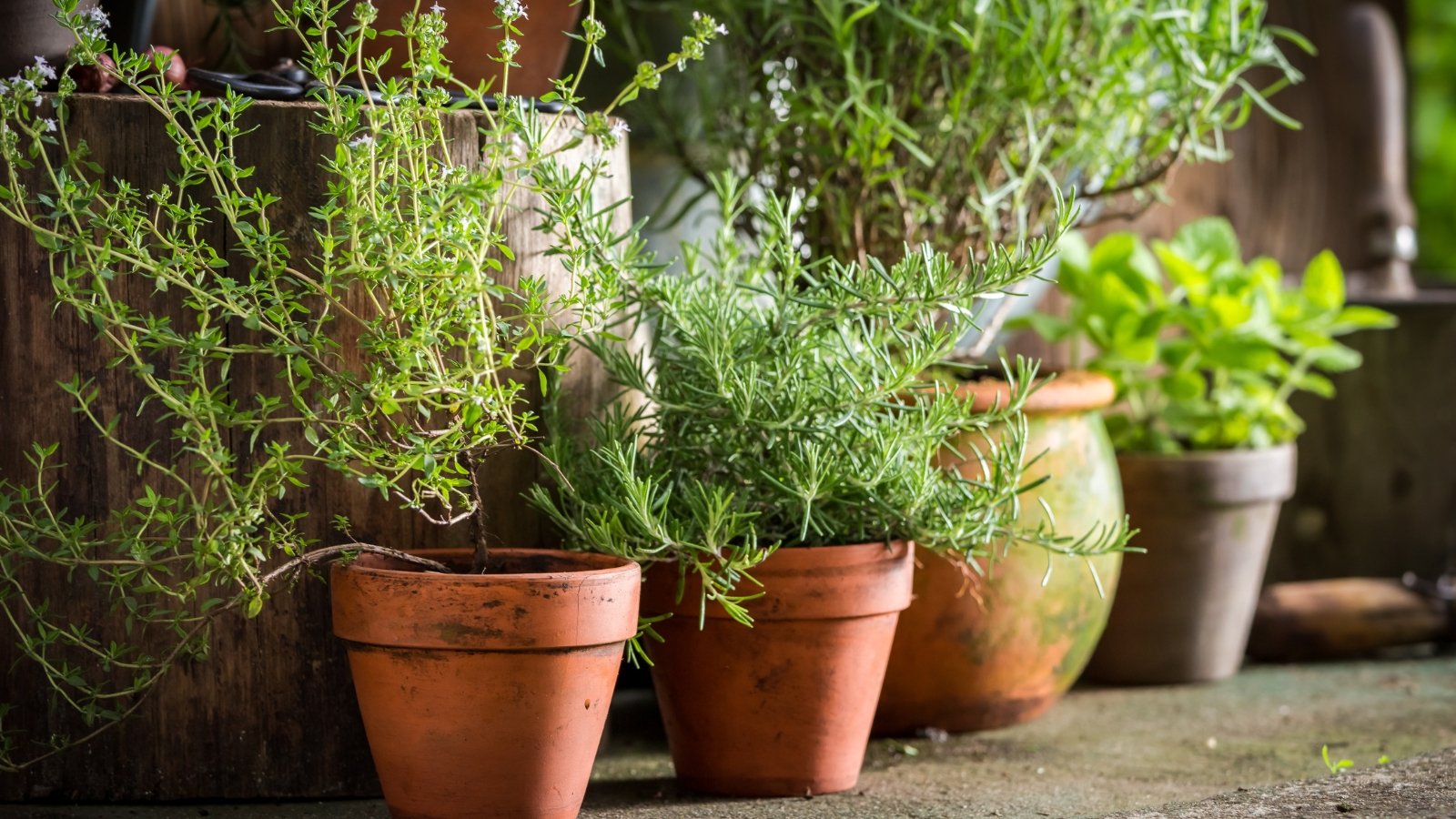
Containers are natural winter protectors for smaller plants. The main advantage is their movability. When the temperature drops, simply move them indoors or into your greenhouse. You can also insulate them by wrapping burlap, blankets, or styrofoam on the inside.
Build a Greenhouse
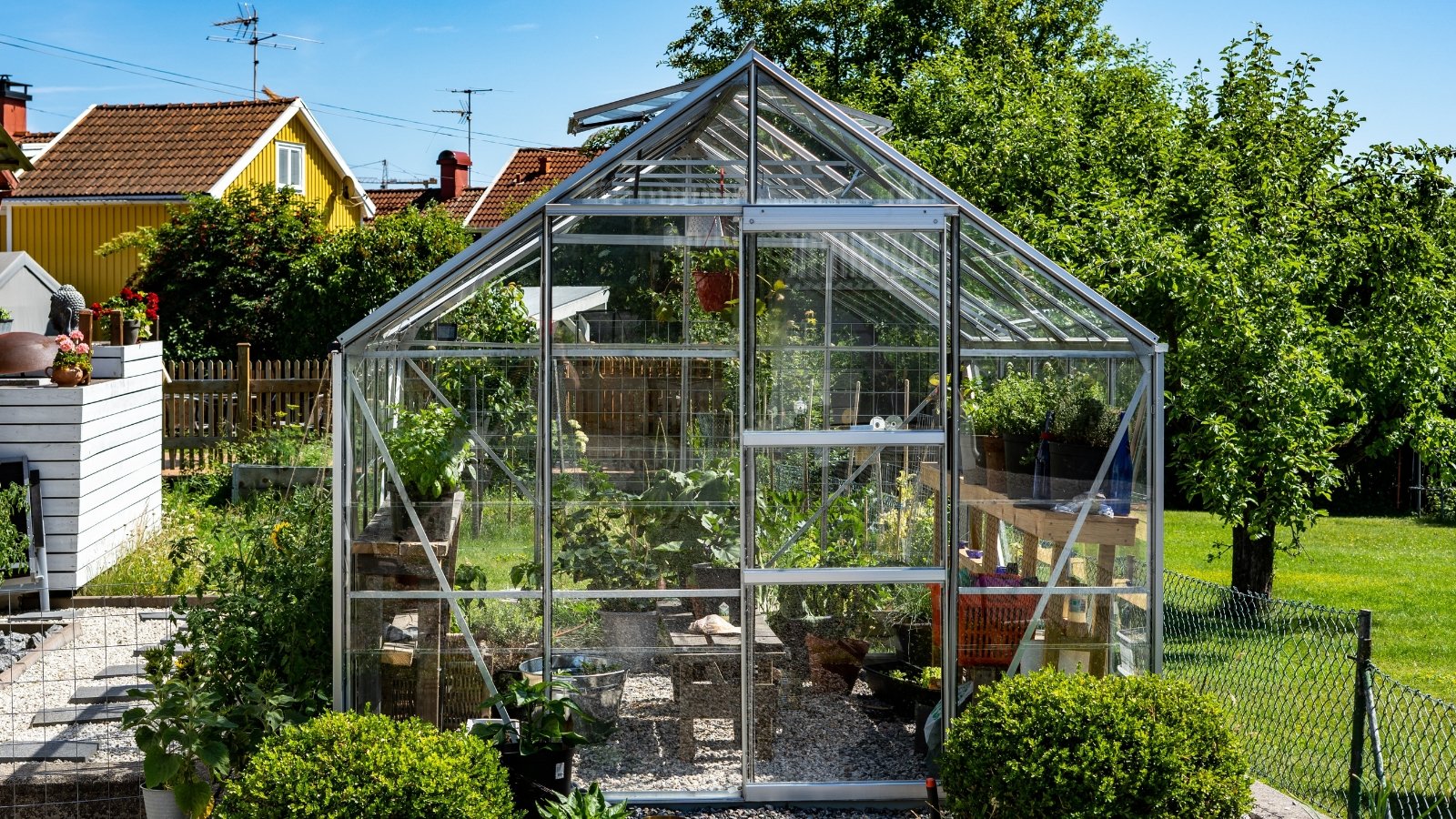
Greenhouses are the ultimate winter plant protectors. However, they can be expensive and take up a lot of space. These structures offer sometimes limitless climate control and give you the freedom to grow any plant in the winter, even tropical species.
You can build greenhouses out of metal or wood. You can attach them to the side of your home or make them into a special winter hang-out area. Whatever your gardening dreams are, greenhouses are probably a big part of them.




